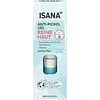What's inside
What's inside
 Key Ingredients
Key Ingredients

 Benefits
Benefits

 Concerns
Concerns

 Ingredients Side-by-side
Ingredients Side-by-side

Water
Skin ConditioningCoco-Caprylate/Caprate
EmollientEthyl Macadamiate
Skin ConditioningGlycerin
HumectantC10-18 Triglycerides
EmollientPropanediol
SolventPolyglyceryl-6 Distearate
EmulsifyingBisabolol
MaskingAllantoin
Skin ConditioningGlycereth-26
HumectantCopernicia Cerifera Wax Extract
Simmondsia Chinensis Seed Oil
EmollientRice Bran Oil Polyglyceryl-3 Esters
EmulsifyingSclerotium Gum
Emulsion StabilisingIsosorbide Dicaprylate
Skin ConditioningZinc Hydrolyzed Hyaluronate
HumectantLinoleic Acid
CleansingLinolenic Acid
CleansingSqualene
EmollientMorinda Citrifolia Callus Culture Lysate
Skin ConditioningPotassium Cetyl Phosphate
EmulsifyingHelianthus Annuus Seed Oil
EmollientTocopherol
AntioxidantCitric Acid
BufferingBeta-Sitosterol
Emulsion StabilisingPhosphoric Acid
BufferingMalic Acid
BufferingEthylhexylglycerin
Skin ConditioningPhenoxyethanol
PreservativeWater, Coco-Caprylate/Caprate, Ethyl Macadamiate, Glycerin, C10-18 Triglycerides, Propanediol, Polyglyceryl-6 Distearate, Bisabolol, Allantoin, Glycereth-26, Copernicia Cerifera Wax Extract, Simmondsia Chinensis Seed Oil, Rice Bran Oil Polyglyceryl-3 Esters, Sclerotium Gum, Isosorbide Dicaprylate, Zinc Hydrolyzed Hyaluronate, Linoleic Acid, Linolenic Acid, Squalene, Morinda Citrifolia Callus Culture Lysate, Potassium Cetyl Phosphate, Helianthus Annuus Seed Oil, Tocopherol, Citric Acid, Beta-Sitosterol, Phosphoric Acid, Malic Acid, Ethylhexylglycerin, Phenoxyethanol
Ingredients Explained
These ingredients are found in both products.
Ingredients higher up in an ingredient list are typically present in a larger amount.
Allantoin is a soothing ingredient known for its protective and moisturizingg properties. Because of this, it is often added to products with strong active ingredients.
Studies show higher concentrations of this ingredient can promote wound healing.
Though it can be derived from the comfrey plant, allantoin is produced synthetically for cosmetic products to ensure purity.
Learn more about AllantoinCitric Acid is an alpha hydroxy acid (AHA) naturally found in citrus fruits like oranges, lemons, and limes.
Like other AHAs, citric acid can exfoliate skin by breaking down the bonds that hold dead skin cells together. This helps reveal smoother and brighter skin underneath.
However, this exfoliating effect only happens at high concentrations (20%) which can be hard to find in cosmetic products.
Due to this, citric acid is usually included in small amounts as a pH adjuster. This helps keep products slightly more acidic and compatible with skin's natural pH.
In skincare formulas, citric acid can:
While it can provide some skin benefits, research shows lactic acid and glycolic acid are generally more effective and less irritating exfoliants.
Most citric acid used in skincare today is made by fermenting sugars (usually from molasses). This synthetic version is identical to the natural citrus form but easier to stabilize and use in formulations.
Read more about some other popular AHA's here:
Learn more about Citric AcidWater. It's the most common cosmetic ingredient of all. You'll usually see it at the top of ingredient lists, meaning that it makes up the largest part of the product.
So why is it so popular? Water most often acts as a solvent - this means that it helps dissolve other ingredients into the formulation.
You'll also recognize water as that liquid we all need to stay alive. If you see this, drink a glass of water. Stay hydrated!
Learn more about Water